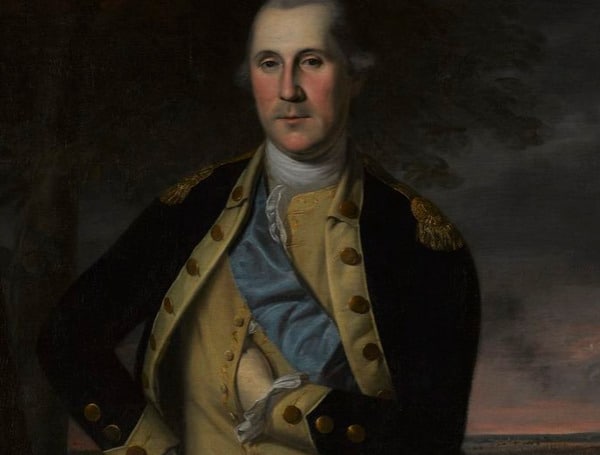George Washington has been the subject of some of America’s most iconic artwork.
German artist Emanuel Leutze’s 1851 painting of Washington and his army crossing the frozen Delaware River on Christmas night in 1776 was once heralded as America’s most famous painting – even though it was painted in Germany.
The official website of Mount Vernon, Washington’s home, notes that in 1851 the New York Evening Mirror declared Leutze’s work “the grandest, most majestic, and most effective painting ever exhibited in America.”
John Hancock, president of the Continental Congress, commissioned this portrait of George Washington. As Commander in Chief of the Continental Army, Washington liberated Boston (visible in the background) from the British in March 1776.
Hancock wrote to Washington, “I beg, Sir, you will be pleased to accept my heartfelt thanks for the attention you have showed to my property in that town.”
Artist Gilbert Stuart’s 1796 painting of Washington first became famous because it was unfinished. Then, it became the image that appears on the $1 bill.
But the Brooklyn Museum, which carries another famous rendering of the father of our country, a 1776 painting commissioned by John Hancock, then president of the Continental Congress, now gets pulled into the 21st century.
According to The Washington Times, the museum has added a “description card” to artist Charles Willson Peale’s work that notes Washington’s “ownership of slaves despite defending the self-evident truth that all men are created equal.”
The portrait shows Washington as a young general, with Boston in the background.
The card, the Times reports, says the “tension between the existence of slavery and the Declaration’s [of Independence] affirmation of freedom and equality” that it is “absent from Peale’s celebrated portrait.”
“Washington enslaved more than 300 people prior to and during his tenure as the nation’s first president,” the card adds.
Yet for some reason, that disclaimer is missing from the museum’s website – even though the museum invites such commentary. “Records [of paintings] are frequently reviewed and revised, and we welcome any additional information you might have,” the website says.
The website adds that Washington “reluctantly” accepted Hancock’s request to sit for the painting, and did so “out of a sense of duty.”
Peale, in his diary entry of July 2, 1776, noted, “This day the Continental Congress declared the United States Colonies Free and Independent States.”
Check out Tampafp.com for Politics, Tampa Area Local News, Sports, and National Headlines. Support journalism by clicking here to our GoFundMe or sign up for our free newsletter by clicking here.
Android Users, Click Here To Download The Free Press App And Never Miss A Story. It’s Free And Coming To Apple Users Soon

